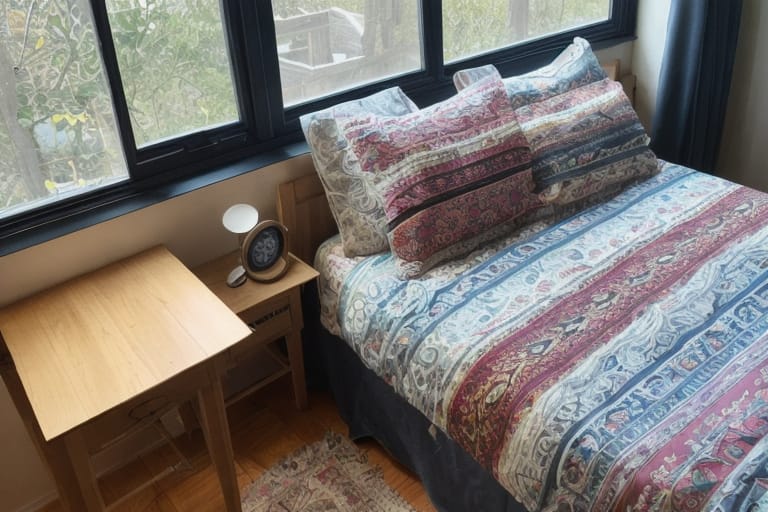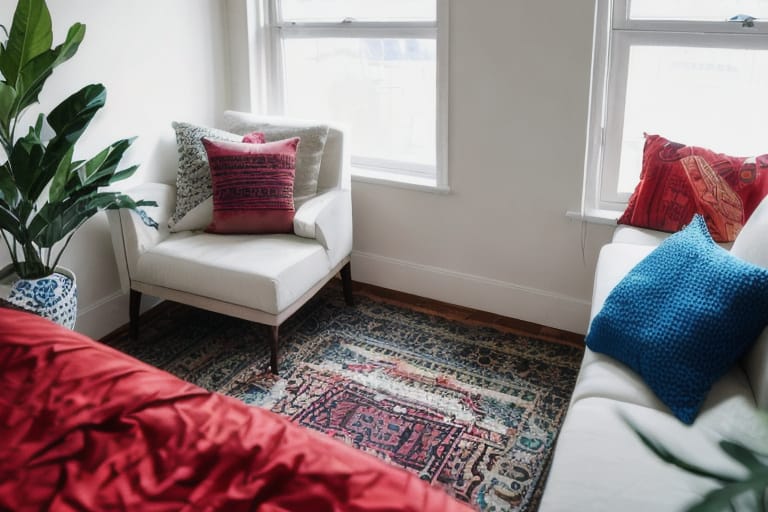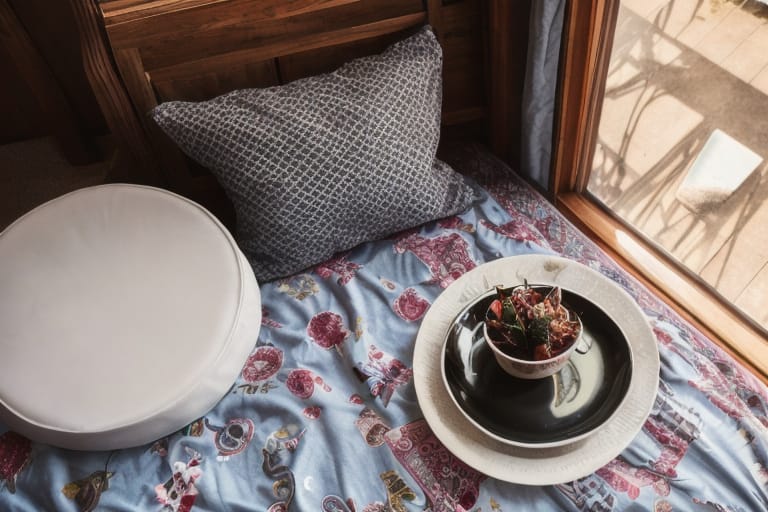When you think of a cozy down comforter, chances are you picture it in classic white. The image of a fluffy white duvet tucked into a rustic wooden bed frame certainly feels timeless. But have you ever wondered why white seems to dominate the down comforter industry?
As you start shopping for the perfect down comforter, the color question can get tricky. Should you play it safe with traditional white, or go bold with a splash of color in your bedroom oasis? This beginner’s guide will walk you through everything you need to know about down comforters and popular color choices in bedding.
A Brief Intro to Down Comforters
Before diving into color options, let’s quickly overview what exactly down comforters are and why they make such heavenly bedding:
- Down comforters are filled with the fluffy under-plumage from ducks or geese. This natural down fill provides unmatched warmth and comfort.
- The baffle box design with diagonal fabric walls inside the comforter prevents the down from shifting, maintaining maximum loft and insulation.
- Materials like cotton, cotton sateen, or Egyptian cotton typically make up the outer fabric shell, with a high thread count for softness.
- Comforters have an attached duvet cover to protect the comforter. Many duvet inserts now use down alternative fills instead of natural down.
The Significance of White Down Bedding
So why has white become so ingrained as the default color for down comforters and bedding over the decades? The pure white color carries important historical and cultural symbolism.
A Long-Standing Tradition
White bed linens have a tradition spanning centuries. Ancient Egyptians valued white for purity and cleanliness. Later on, white bedding represented wealth and status as keeping white fabrics spotless required intensive labor.
This early association of white with luxury linens carried over into the European upper classes. Royalty donned elaborately decorated bedrooms with plush white linens.
By the 19th century, the bright white aesthetic of hotels and country inns also grew popular. This classic look continues today in the crisp white down comforters found in many rentals and hospitality establishments.
Cultural Meaning Behind White
The color white brings to mind cleansing and a fresh start. It evokes positive connotations like:
- Cleanliness and purity: White gives off an airy, hygienic impression, free of stains or impurities.
- Simplicity and peace: White has a low visual stimulus that can encourage feelings of relaxation.
- Elegance: Crisp white bedding conveys classic sophistication.
This combination of positive symbolic meanings helps explain why white down has maintained such popularity over the years. The welcoming yet elegant vibe fits well for guest rooms and rentals.
Factors Impacting Down Comforter Color Selections
Beyond historical precedence, several practical elements also drive many consumers and manufacturers toward white down comforters as opposed to bolder color choices.
What Down Comforter Colors are Trending?
White, beige and gray shades tend to dominate down comforter sales. Pops of color exist but occupy just a small market share. Consumer behavior shows a preference leaning toward neutral and earthy comforter hues.
Color psychology helps explain this pattern. While vibrant colors can seem exciting initially, muted palettes tend to provide a more relaxing presence long-term.
Stain Resistance & Maintenance
Keeping bedding light in color aids with stain resistance and ease of cleaning. Dark fabrics show every pet hair, soil smudge or food spill. Light down bedding covers better and allows for bleaching if necessary.
Design Versatility
White, beige and gray down comforters mix seamlessly into almost any bedroom style from farmhouse to modern. Choosing these neutral background colors prevents clashing with additional decorative fabrics.
Alternatives Beyond Down Fill
For those desiring a change from the customary white down, alternatives exist that provide similar warmth and softness.
About Down Alternative Comforters
Down alternative comforters substitute materials like polyester and rayon for the traditional goose or duck plumage:
- DOWN Alternative Fill Pros
- Hypoallergenic
- More affordable
- Animal cruelty free
- DOWN Alternative Fill Cons
- Less fluffy
- Retains more body heat
- Potential off-gassing of chemicals
Comparing Down vs Down Alternative Impact
Both natural down and synthetic down alternative fills come with tradeoffs:
Down comforters score higher for durability, longevity and breathability. However, down alternative often edges out down for environmental sustainability and animal ethics.
Stylish Down Comforters Beyond Basic White
Just because most down comforters skew white doesn’t mean you can’t incorporate color through bedding layers. Some ideas for injecting personality:
- Look for a white duvet insert with a bright patterned duvet cover
- Mix textures with cable knit throws and decorative pillows
- Accent with complementary wall art or area rugs
On-Trend Color Options
If you want to go bold with a colored down comforter itself, consider 2021 trend predictions:
- Earth tones
- Rich browns, subdued greens
- Cool tones
- Serene light blues, calming grays
- Bright touches
- Vibrant yellow and energizing orange
Balance lively pops of color with plenty of white and neutral elements for a cohesive look.
Incorporating Texture, Layers and Patterns
Don’t overlook layering textures with throws and pillows for infusing personality into a white down comforter base:
- Flannel throws in buffalo check or vibrant hues
- Fuzzy faux fur pillows in ivory or cream
- Decorative pillows mixing bold patterns and embroidered accents
Playing with patterns and fabrics creates a cohesive, collected look. The neutral down comforter foundation allows for bolder flourishes.

Celebrity Influence on Down Comforter Trends
Celebrity collaborations and designer collections also move the needle on consumer comforter purchases. Actress Susan Lucci launched a successful homewares brand that illustrates this influence.
Overview of Susan Lucci Home Collection
Since 2011, Susan Lucci has sold a home collection through HSN, QVC and other retailers. The extensive product line spans bedding, pillows, rugs and furniture. Several core elements define the brand’s down comforter aesthetic:
- Primarily white, beige and silver color schemes
- Mixed media combining faux fur, chenille, velvet
- Touches of embellished patterns and metallic shimmer fabric
- Signatures of luxury with flange edging and delicate trim
The collection exudes affordable elegance aligned with Lucci’s star persona.
Consumer Impact
While Lucci plants her flag firmly in the white down comforter camp, the textures and Hollywood glamour details attract consumers. Customer reviews gush over the premium quality and tailored luxury.
This celebrity halo effect demonstrates the power of reputation. Consumers connect trusted names like Susan Lucci to product attributes like quality construction and upscale materials.
Optimizing SEO Strategy With LSI Keywords
Any bedding brand needs an effective SEO strategy to drive online sales. This requires researching relevant keyword search volumes and competition levels using tools like LSIGraph and Google’s Keyword Planner.
Why LSI Keywords Matter for Ranking
LSIGraph helps identify latent semantic indexing (LSI) keywords that search engines like Google connect semantically to topics. Targeting these LSI keywords throughout page content and metadata improves domain authority and ranking potential.
Steps for Utilizing LSIGraph Effectively
Follow this process to leverage LSIGraph most effectively:
- Brainstorm seed keywords like “duvet insert” and “goose down comforter”
- Review the lsigraph visualization for clusters of related keywords
- Identify high search volume keywords with reasonable competition
- Map LSI keywords to pages (e.g. “baffle box construction” article)
Sprinkling 3-5% keyword density using LSI terms boosts relevance. But avoid awkward over-use or keyword stuffing.
Enhancing User Experience Through Semantic Search
Optimizing for semantic search means going beyond just chasing keywords. It requires analyzing how searchers mentally connect and contextualize terms. This understanding allows delivering content and recommendations perfectly matched to customer intent.
Improving Search Accuracy
Semantic analysis through AI and machine learning better interprets the meaning and relationships between search phrases. This reduces mismatching results that lack relevance.
Instead of just seeing keywords, semantic technology comprehends the whole query in context. This leads searchers to precise content faster without useless suggestions.
Personalizing With Semantic Recommendations
Semantic search also enables tailored product recommendations. By categorizing shopper behavior based on meaningful topics, brands can surface relevant items onsite.
Personalized content based on semantic data interpretation boosts:
- Click-through rates
- Time on site
- Purchase conversion odds
Getting shoppers precise suggestions translates directly to sales lift.
Future Trajectories for Down Bedding Industry
Beyond a focus on colors and visual appearance, down comforter brands also keep sustainability and production methods top of mind.
Fabric and Fill Innovations
Expect continued movement toward:
- Alternative down fills using recycled materials
- Organic certified fabrics in bedding components
- Responsible down certification from animal welfare audits
Consumers demand ethical standards in production and environmental impacts. Signs point to brands responding accordingly.
Commitments to Carbon Neutrality
Many bedding suppliers now chase ambitious carbon emission goals. Reduction tactics involve:
- Renewable energy investments
- Energy efficient manufacturing
- Waste diversion and recycling
Watch for more brands attaining net zero operations through carbon offsetting.
Takeaways: Why White Down Comforters Dominate
- The bright, clean look aligns with positive symbolic meanings
- Light colors allow for easy maintenance and stain removal
- Neutral palettes blend into varying aesthetics
- Alternatives like down alternative fills enable new options
- Adding layers and textures allows for infusing personality
While white likely remains the down comforter color queen for years to come, the increasing influence of celebrity collaborations and emerging styles keeps the category fresh and interesting for bedding shoppers.

Frequency Asked Questions
What colors are trending in down comforters beyond basic white?
- Earth tones like brown and sage green have grown popular for down comforters and duvet inserts. Cool shades of light blue and heather gray also maintain their allure as soothing, neutral backdrops.
How often should you replace a down comforter for maximum performance?
- With proper care and maintenance, a quality down comforter can retain its insulation and support for over 20 years. Take care not to wash too frequently, and use an oversized duvet cover to protect the comforter for extended life.
Why do down comforters all tend to be white or neutral?
*The clean look of bright white aligns with the historic symbolism of light colors representing purity and freshness. The visual calm and versatility of working in various decor schemes further cements whites and neutrals as safe down comforter choices for mass market appeal.
What impact do celebrity designers like Susan Lucci have on down bedding trends?
- Well-known celebrity collaborations attract consumer attention and infuse perceived star quality into home product lines. Susan Lucci successfully channels her famous persona into elegant touches on her comforter sets. This halo effect of fame and reputation translates into sales.
How should you incorporate patterns and accent colors with a white down comforter base?
- Getting creative with layers of throws, duvet covers and decorative pillows allows personalizing a neutral foundation. Play with different textures like chenille and fur. Mix classic patterns like buffalo check with bohemian paisleys. Use color schemes informed by the psychology linked to each hue.
Why does optimizing for LSI keywords matter for SEO success?
- Latent Semantic Indexing looks beyond just matching exact keywords to evaluate topical relevance. Weaving LSI keywords throughout site content and metadata helps search engines better grasp conceptual links. This improves how pages rank for meaningful search queries instead of minor keyword matches.








